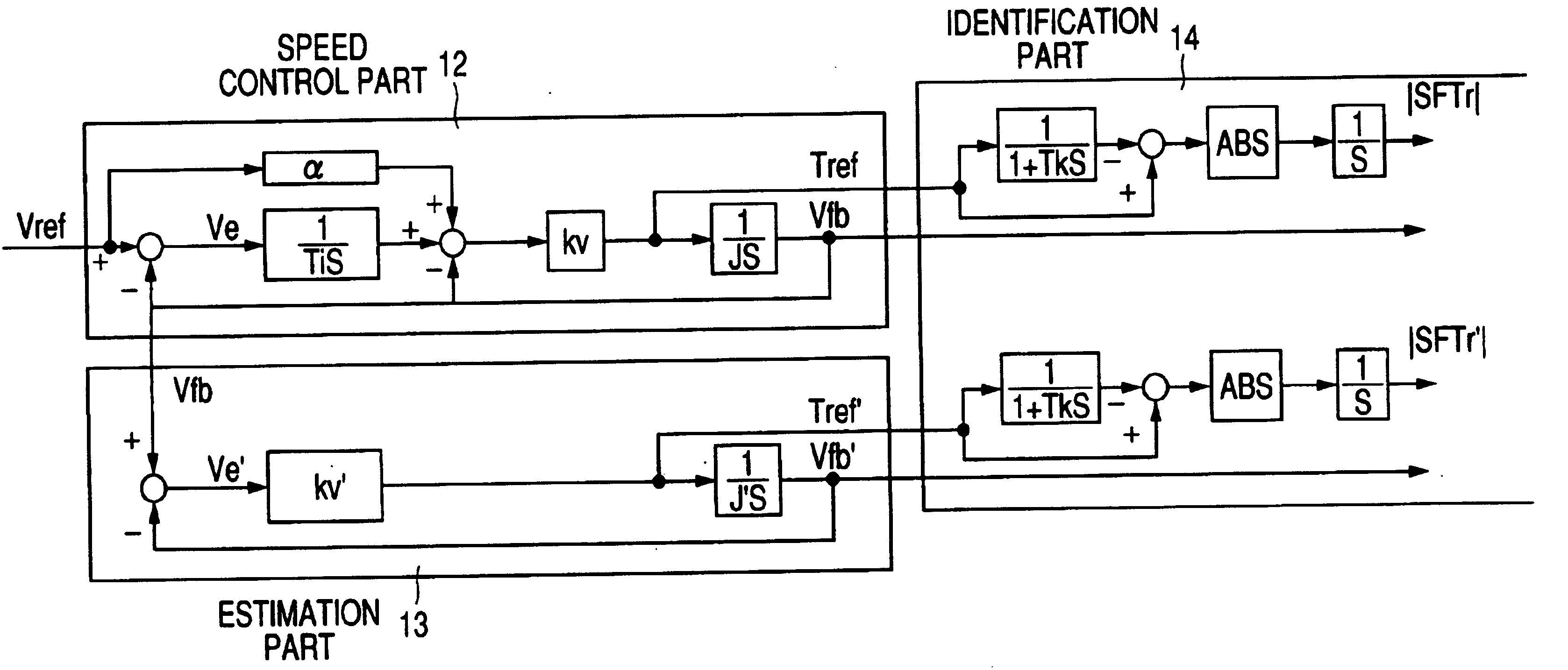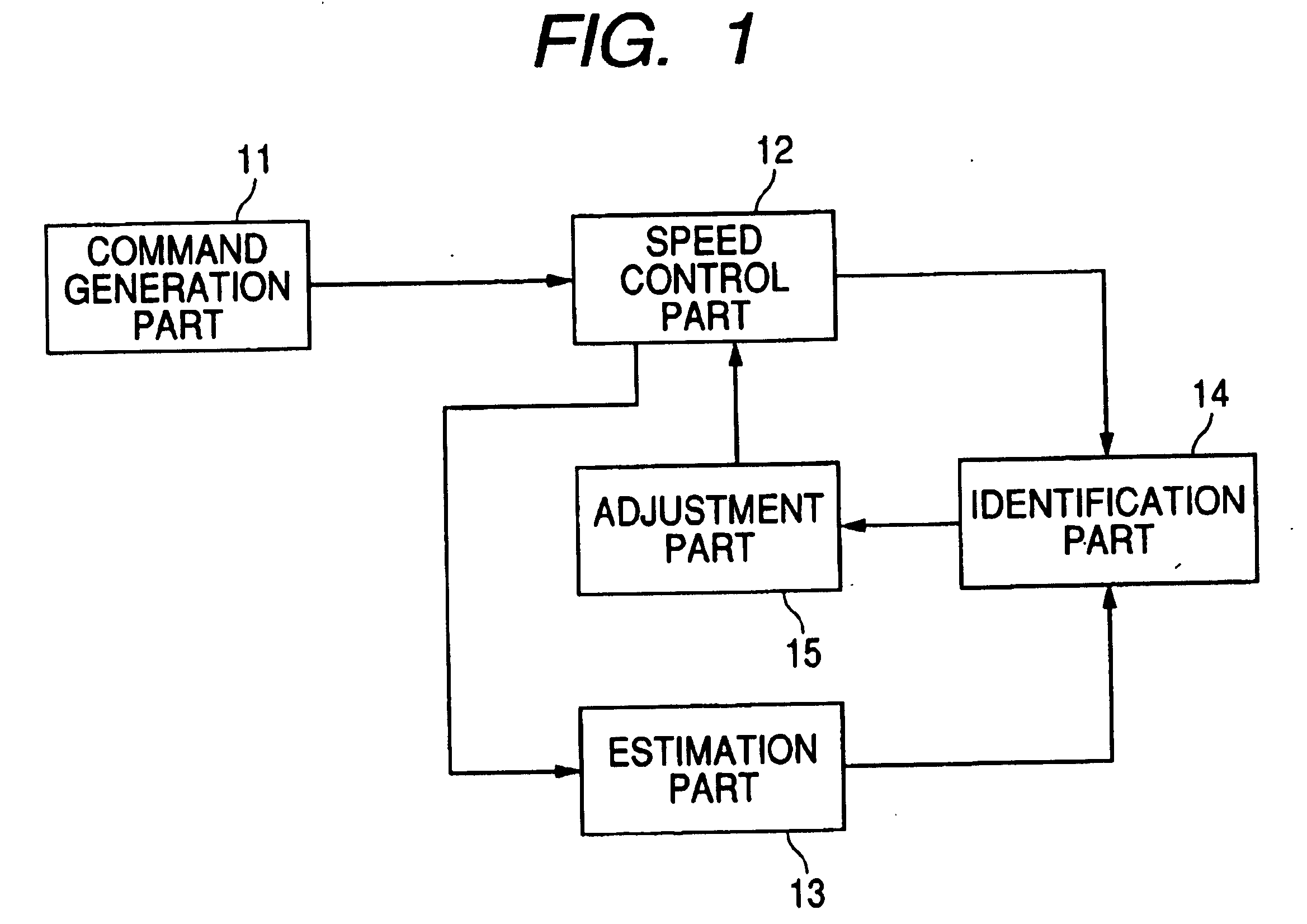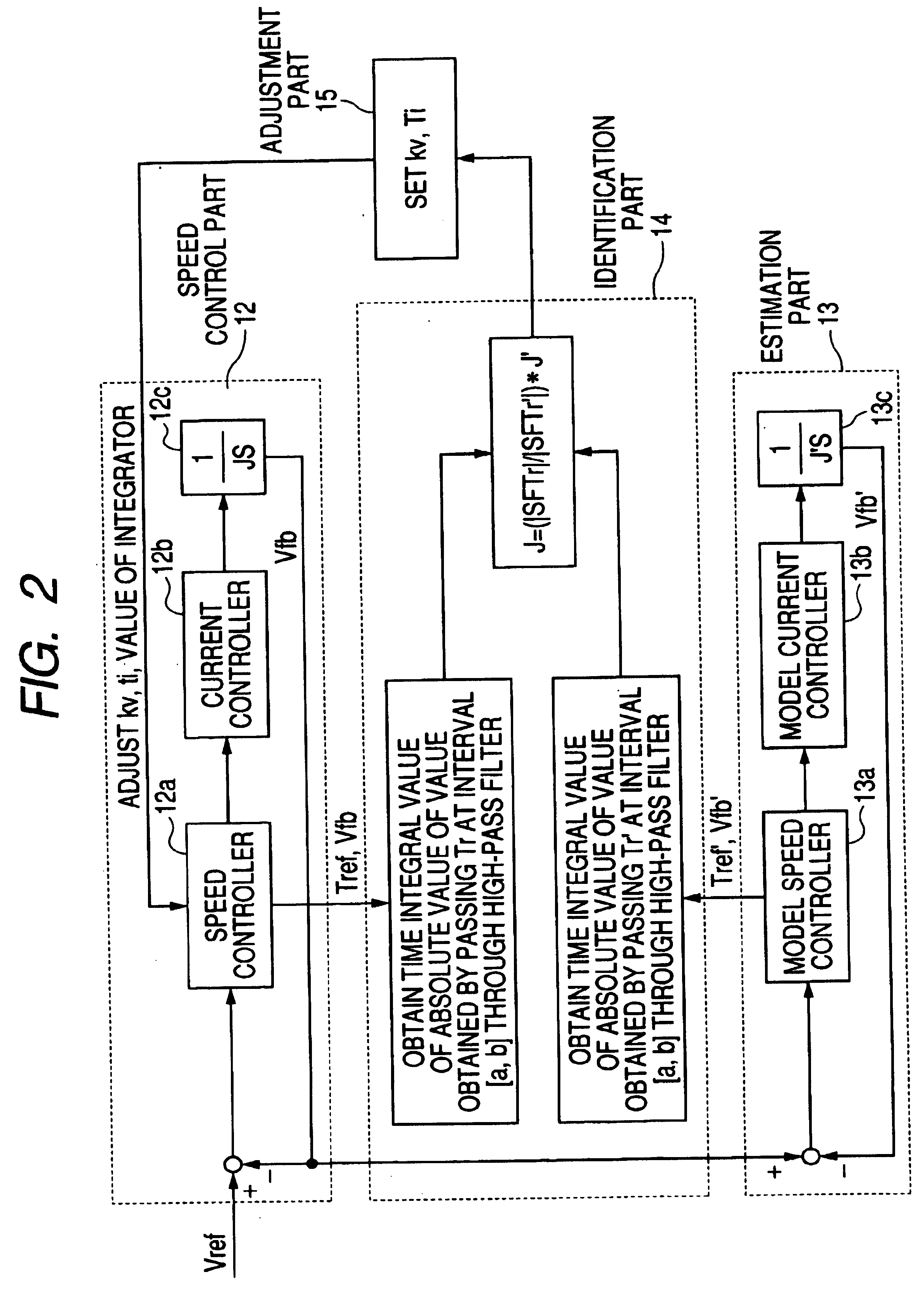Control constant adjusting apparatus
a constant adjustment and control technology, applied in the direction of electric controllers, program control, instruments, etc., can solve the problems of difficult to reflect the compensation amount of the load disturbance in the model, delay in the model speed control system, and time-consuming, and achieve the effect of high identification accuracy and time taken
- Summary
- Abstract
- Description
- Claims
- Application Information
AI Technical Summary
Benefits of technology
Problems solved by technology
Method used
Image
Examples
Embodiment Construction
[0022] Referring to FIG. 1, a control constant adjusting apparatus of a first embodiment of the invention includes a command generation part 11, a speed control part 12, an estimation part 13, an identification part 14 and an adjustment part 15.
[0023] The command generation part 11 outputs a speed command Vref to the speed control part 12.
[0024] The speed control part 12 performs speed control so that a motor speed Vfb matches with the inputted speed command Vref, and outputs a torque command Tref and the motor speed Vfb to the identification part 14, and also outputs the motor speed Vfb to the estimation part 13.
[0025] The estimation part 13 performs speed control so that a model speed Vfb′ estimated by using a motor model in this estimation part 13 matches with the motor speed Vfb inputted as a target command, and outputs a model torque command Tref′ and the model speed Vfb′ to the identification part 14.
[0026] The identification part 14 obtains an inertia ratio J / J′ between a...
PUM
 Login to View More
Login to View More Abstract
Description
Claims
Application Information
 Login to View More
Login to View More - R&D
- Intellectual Property
- Life Sciences
- Materials
- Tech Scout
- Unparalleled Data Quality
- Higher Quality Content
- 60% Fewer Hallucinations
Browse by: Latest US Patents, China's latest patents, Technical Efficacy Thesaurus, Application Domain, Technology Topic, Popular Technical Reports.
© 2025 PatSnap. All rights reserved.Legal|Privacy policy|Modern Slavery Act Transparency Statement|Sitemap|About US| Contact US: help@patsnap.com



